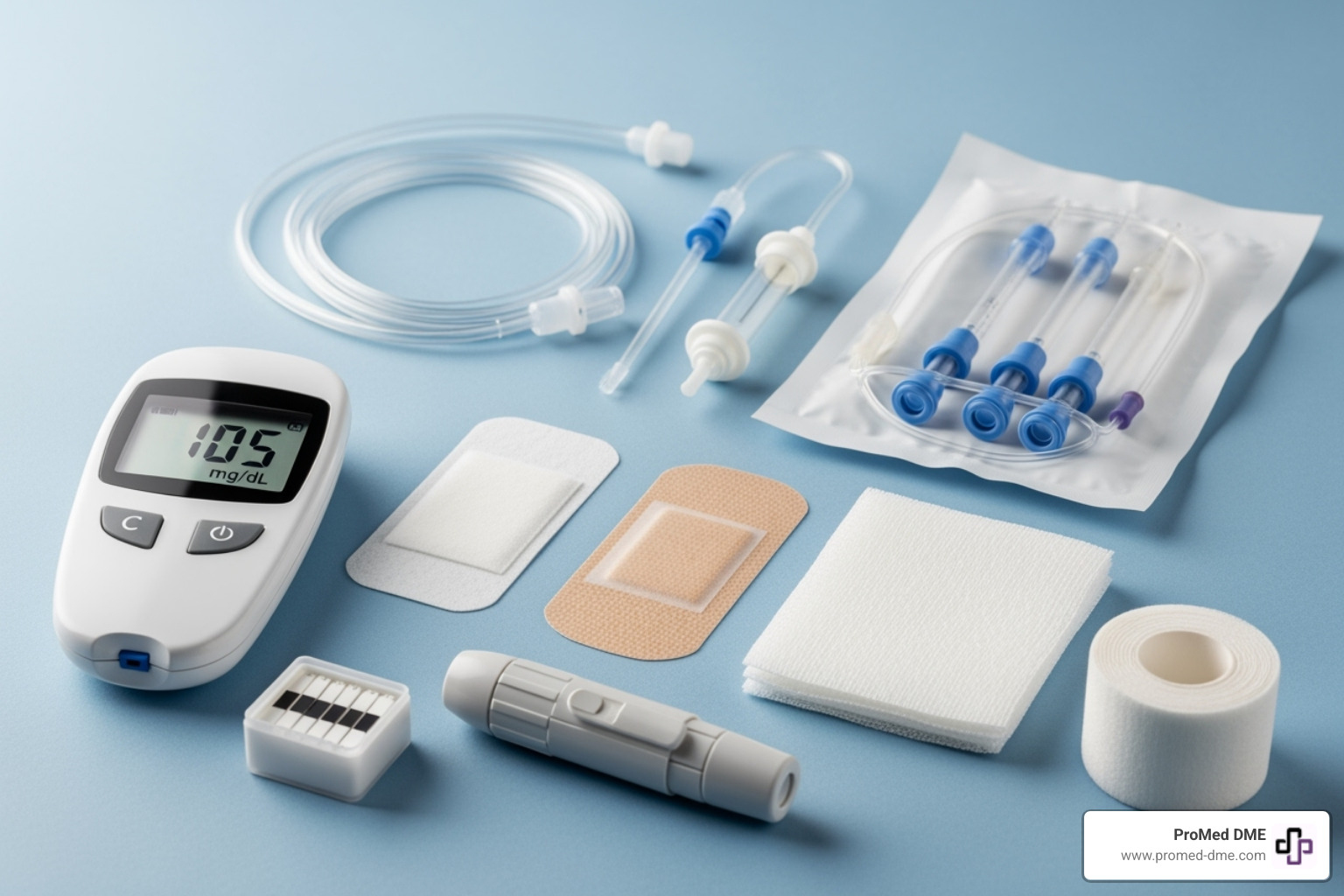Understanding Single Use Syringes for Safety and Convenience
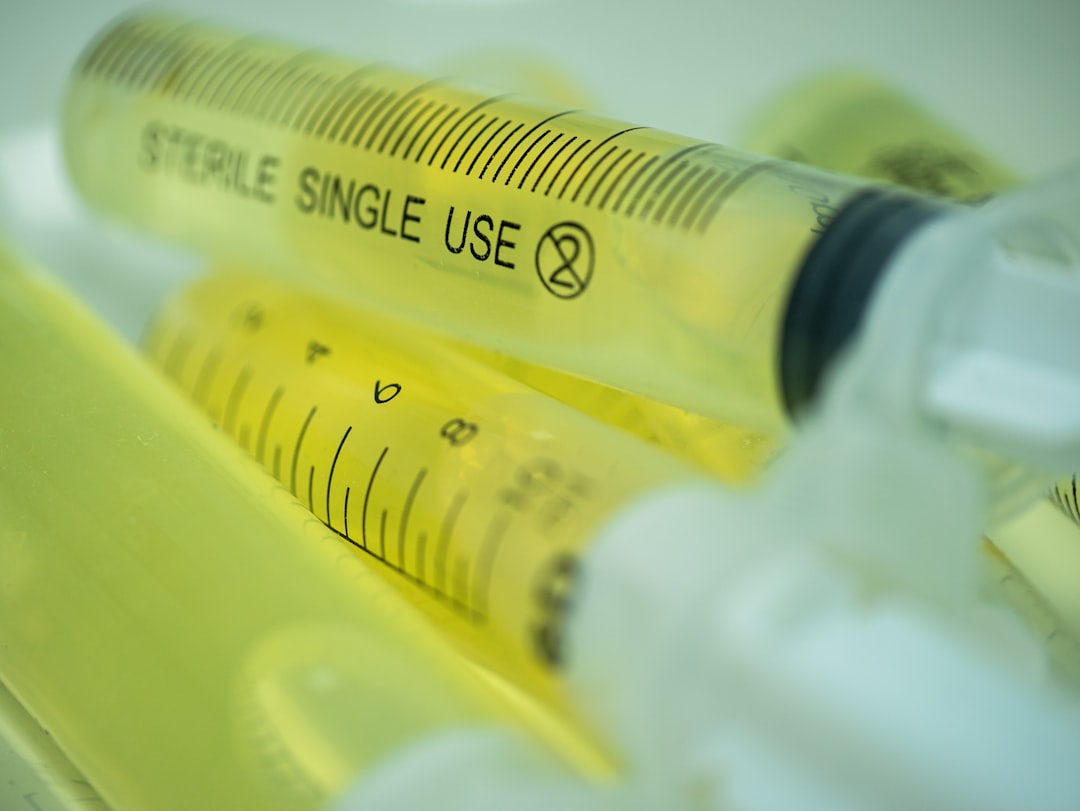
The Essential Role of Single-Use Syringes in Modern Healthcare
Single use syringes are simple medical devices designed to be used once and then safely discarded. They consist of a plastic barrel with volume markings, a plunger that creates suction and pressure, and a tip that connects to needles or other medical equipment.
Key Facts About Single-Use Syringes:
- 90% of medical syringes are used to administer drugs
- 5% for vaccinations and 5% for other medical procedures
- Made from plastic (polypropylene and polyethylene) for affordability and safety
- Prevent cross-contamination and reduce disease transmission
- Available in sizes from 1mL to 140mL for different medical needs
Most modern medical syringes are plastic because they're cheap enough to dispose of after being used only once, significantly reducing the risk of spreading blood-borne diseases like HIV and hepatitis. This single-use approach has revolutionized healthcare safety.
The familiar image of a healthcare worker holding a syringe upright, tapping it, and expelling a small amount of liquid before injection serves an important purpose - preventing air embolisms that could occur if air enters the bloodstream.
For patients managing chronic conditions like diabetes, understanding these devices is crucial for safe self-administration of medications. Whether you're using insulin syringes daily or need irrigation syringes for medical care, knowing the basics helps ensure proper technique and safety.
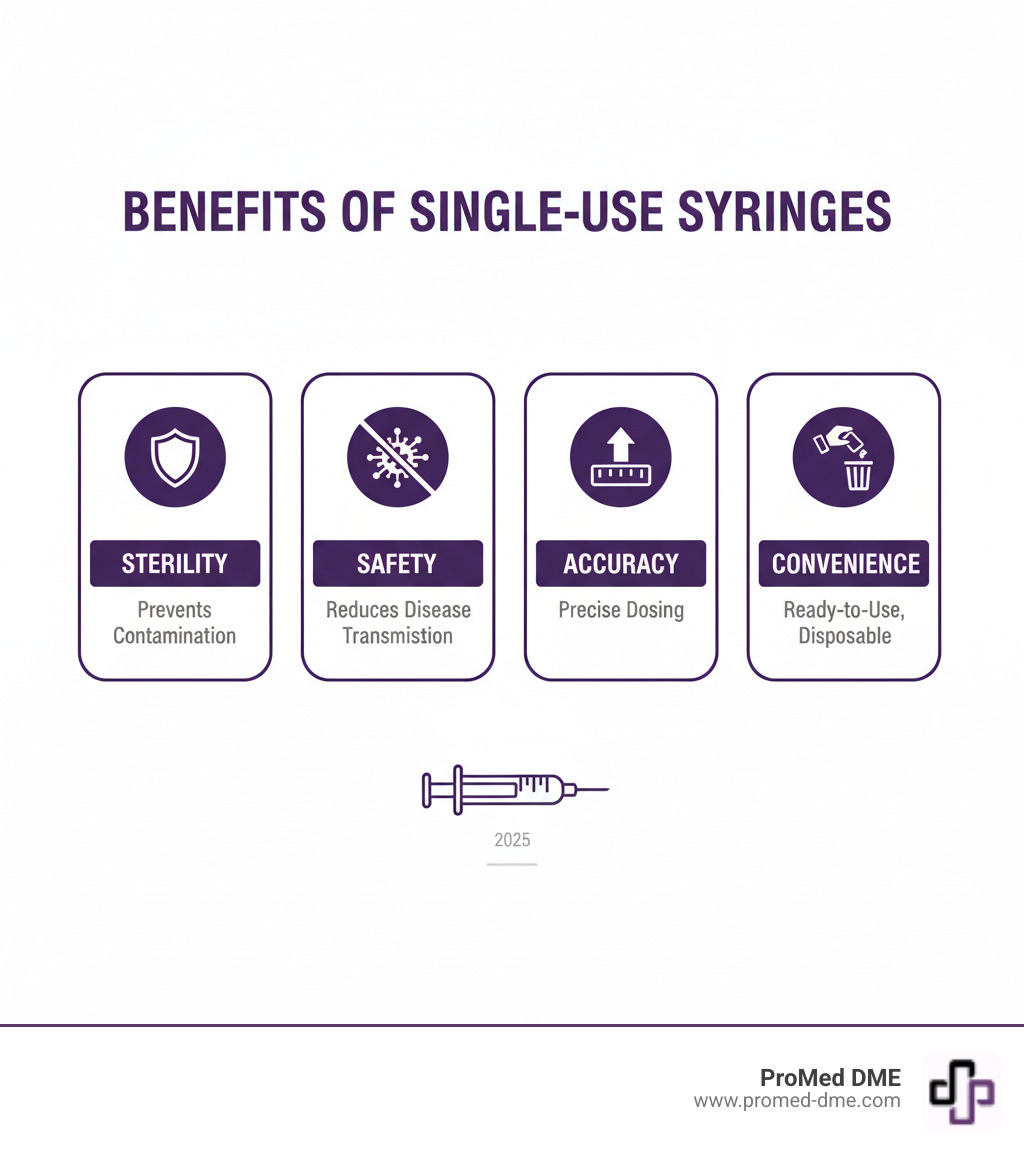
Quick single use syringes definitions:
Anatomy of a Syringe: Components and Materials
When you hold a single use syringe in your hand, you might think it's just a simple plastic tube with a plunger. But there's actually some pretty clever engineering packed into this everyday medical tool. Let's take a closer look at what makes these devices work so well.
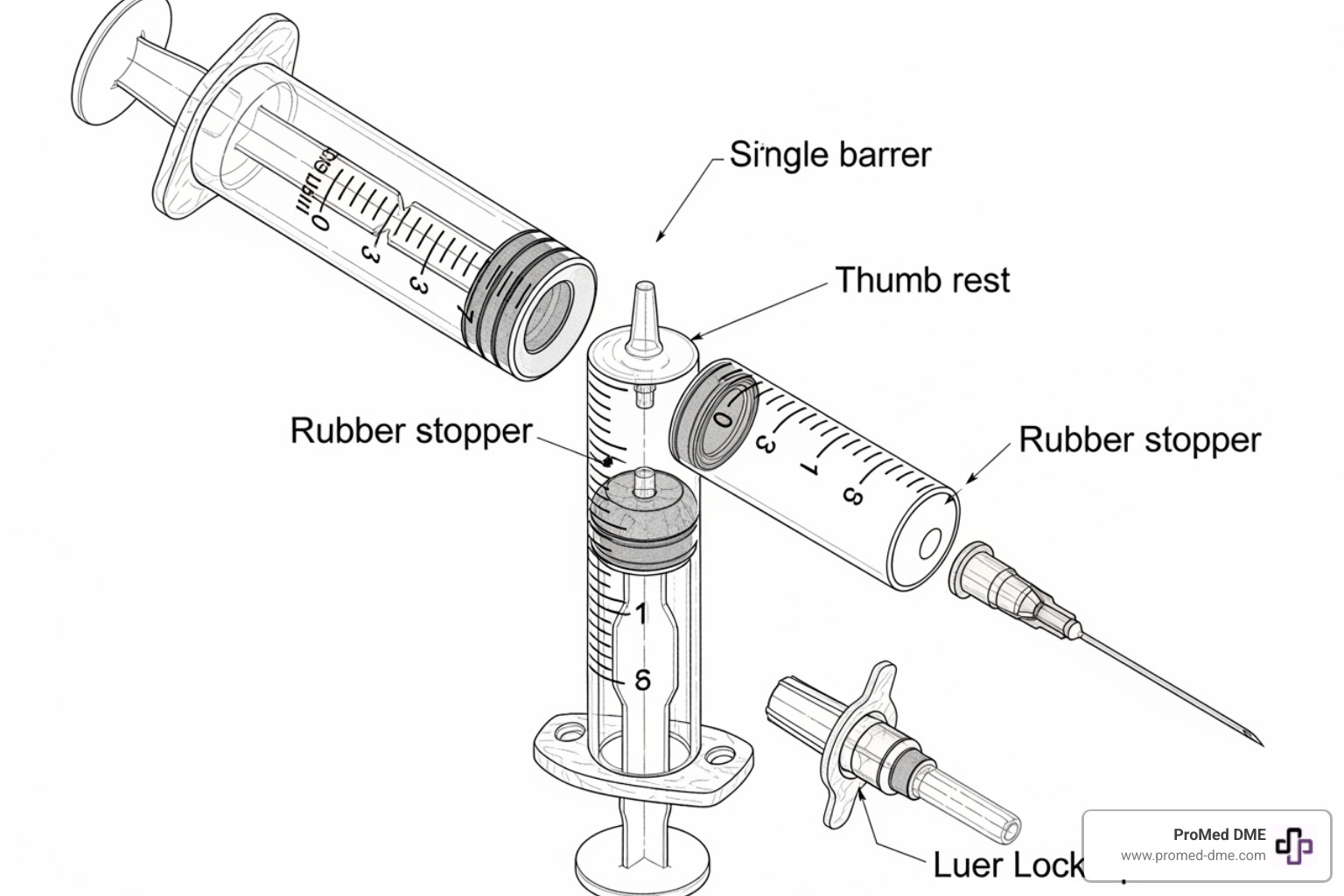
Core Components and Their Function
Think of a syringe as a tiny, precise pump. It's designed to move liquids in and out with amazing accuracy - something that's pretty important when you're dealing with medications!
The barrel is the main body of the syringe, and it's where all the action happens. This clear plastic tube holds your medication and features those tiny lines you see along the side. Those volume markings aren't just decoration - they're your guide to getting the exact dose you need. You'll see them marked in milliliters (mL) or cubic centimeters (cc), which are actually the same thing (1 mL equals 1 cc).
The plunger is the rod that slides inside the barrel. When you pull it back, it creates suction that draws liquid into the syringe. Push it forward, and it pushes the liquid out. At the tip of the plunger, there's a rubber or synthetic piston that creates a tight seal against the barrel walls. This seal is what makes the whole system work - without it, you'd just be pushing air around.
At the business end of the syringe, you'll find the tip. This is where needles or other medical devices connect to the syringe. The design of this tip is more important than you might think - it needs to create a secure, leak-proof connection every time. Some syringes also come with a needle hub that connects the needle to the syringe tip.
Common Materials and Their Properties
The materials used in single use syringes are chosen very carefully. They need to be safe, affordable, and work reliably every single time.
Most syringe barrels are made from polypropylene, a clear, rigid plastic that can handle sterilization without breaking down. It's also chemically resistant, which means it won't react with medications. The transparency is crucial too - you need to see exactly what's in your syringe and how much.
The plunger is often made from polyethylene, which provides a smooth surface that glides easily inside the barrel. Some modern designs use all-plastic construction, eliminating the need for rubber parts and silicone lubricant. This creates what's called a two-part syringe design.
However, many single use syringes use a three-part design with a separate rubber piston on the plunger tip. This creates an even smoother operation and better seal, often with a thin layer of silicone lubricant to help everything move smoothly.
One thing you'll notice about quality medical syringes is that they're latex-free. This isn't just a nice-to-have feature - it's essential for preventing allergic reactions in patients and healthcare workers. Being hypoallergenic is a basic requirement for modern medical supplies.
Understanding Syringe Tip Designs
Here's where things get really interesting. The tip of a syringe might look like a small detail, but it makes a huge difference in how the syringe works and what it can be used for.
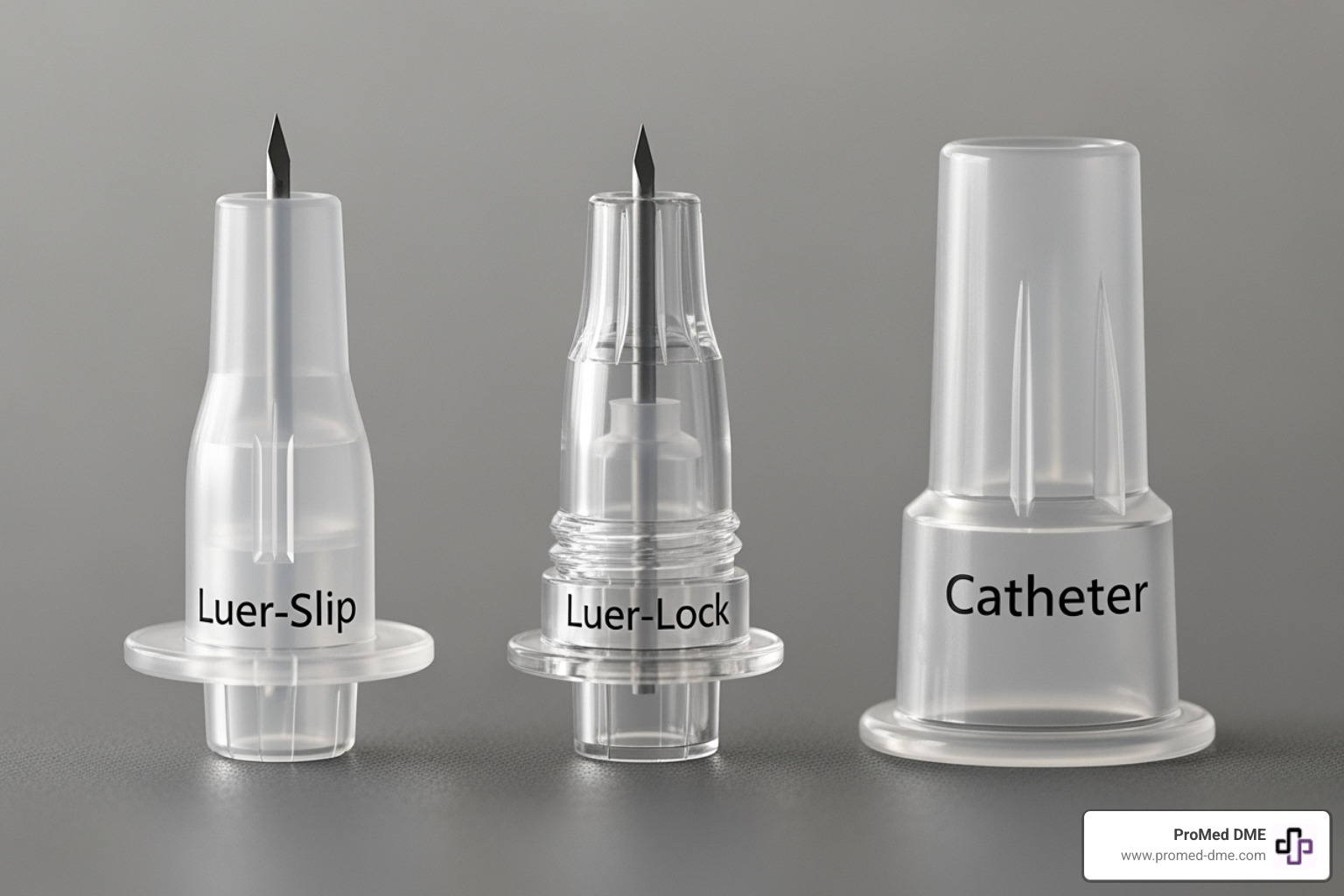
The Luer-Lock tip is the gold standard for secure connections. It features threads that let you twist and lock a needle or device onto the syringe. Once it's locked, it's not going anywhere - which is exactly what you want when you're dealing with medications or IV therapy. This design prevents accidental disconnections that could be dangerous.
If you need something simpler, the Luer-Slip tip might be your answer. This design uses a friction fit - you just push the needle onto the tip and the pressure holds it in place. It's quick and easy for routine tasks, but it's not as secure as a Luer-Lock.
For irrigation procedures, you'll often see a catheter tip. These are larger and more tapered, designed specifically for connecting to tubing or catheters. They're perfect for wound cleaning or other flushing procedures.
Finally, there's the eccentric tip, which is positioned off-center on the syringe barrel. This clever design allows the needle to lie almost flat against the skin, making it ideal for surface injections or when you need to work in tight spaces. It gives healthcare providers better visibility and control during delicate procedures.
Each tip design serves a specific purpose, showing just how much thought goes into creating these essential medical tools. When you're choosing supplies, picking the right tip for your needs is just as important as getting the right size syringe.
Types and Applications of Single Use Syringes
The world of single use syringes is surprisingly diverse. While you might picture the classic vaccination syringe when you think of these devices, they actually serve countless purposes across medical facilities, laboratories, and even in everyday life. Let's explore how different syringe designs meet specific needs.
Standard Hypodermic Syringes
The standard hypodermic syringe is the familiar hero of modern medicine. These versatile tools handle the majority of medical procedures we encounter, and their single-use design has revolutionized healthcare safety.
When you receive a vaccination or medication injection, you're likely experiencing the work of a standard hypodermic syringe. These devices excel at general medication administration, which accounts for about 90% of medical syringe usage according to the World Health Organization. Whether it's an intramuscular injection in your arm, a subcutaneous injection under your skin, or intravenous therapy directly into your bloodstream, these syringes deliver medications precisely where they need to go.
Vaccinations represent another critical application, using about 5% of medical syringes globally. The single-use nature becomes especially important during mass immunization campaigns, where preventing disease transmission between patients is absolutely essential.
Healthcare providers also rely on these syringes for drawing fluids - whether that's collecting blood samples for your annual checkup or removing excess fluid from a patient's body. The same device that can deliver life-saving medication can also help diagnose health conditions through fluid collection.
Specialized single use syringes for Specific Needs
While standard syringes handle most tasks, certain medical situations require specialized tools designed for specific purposes.
Insulin syringes represent perhaps the most important specialized category. If you or a loved one manages diabetes, you'll appreciate how these syringes are engineered specifically for insulin delivery. They feature U-100 units markings, meaning the barrel shows insulin units rather than milliliters - making dosing much simpler and safer. The low dead space design ensures you receive your full insulin dose without waste, while the finer needles reduce the discomfort of frequent daily injections.
You might wonder about reusing insulin syringes to save money. While understandable, it's not recommended even for personal use. As medical experts explain, reusing insulin syringes isn't safe because needles become dull, increasing pain and tissue damage, plus bacteria can grow and cause serious infections.
Tuberculin syringes serve a different specialized purpose. These small 1mL syringes feature incredibly precise markings - often in hundredths of a milliliter - making them perfect for TB skin tests and allergy testing where exact tiny doses matter.
Oral syringes look quite different from their injection counterparts. These needleless devices, often colored purple to prevent confusion, safely deliver liquid medications by mouth. They're especially valuable for giving medicine to children or when patients can't swallow pills reliably.
Irrigation syringes with their catheter tips excel at washing and flushing procedures. Whether cleaning wounds, flushing catheters, or performing medical irrigation, these larger-capacity syringes handle tasks where injection syringes would be inappropriate.
Non-Medical and Laboratory Applications
Single use syringes have found their way into surprising places beyond healthcare settings, proving their versatility in numerous applications.
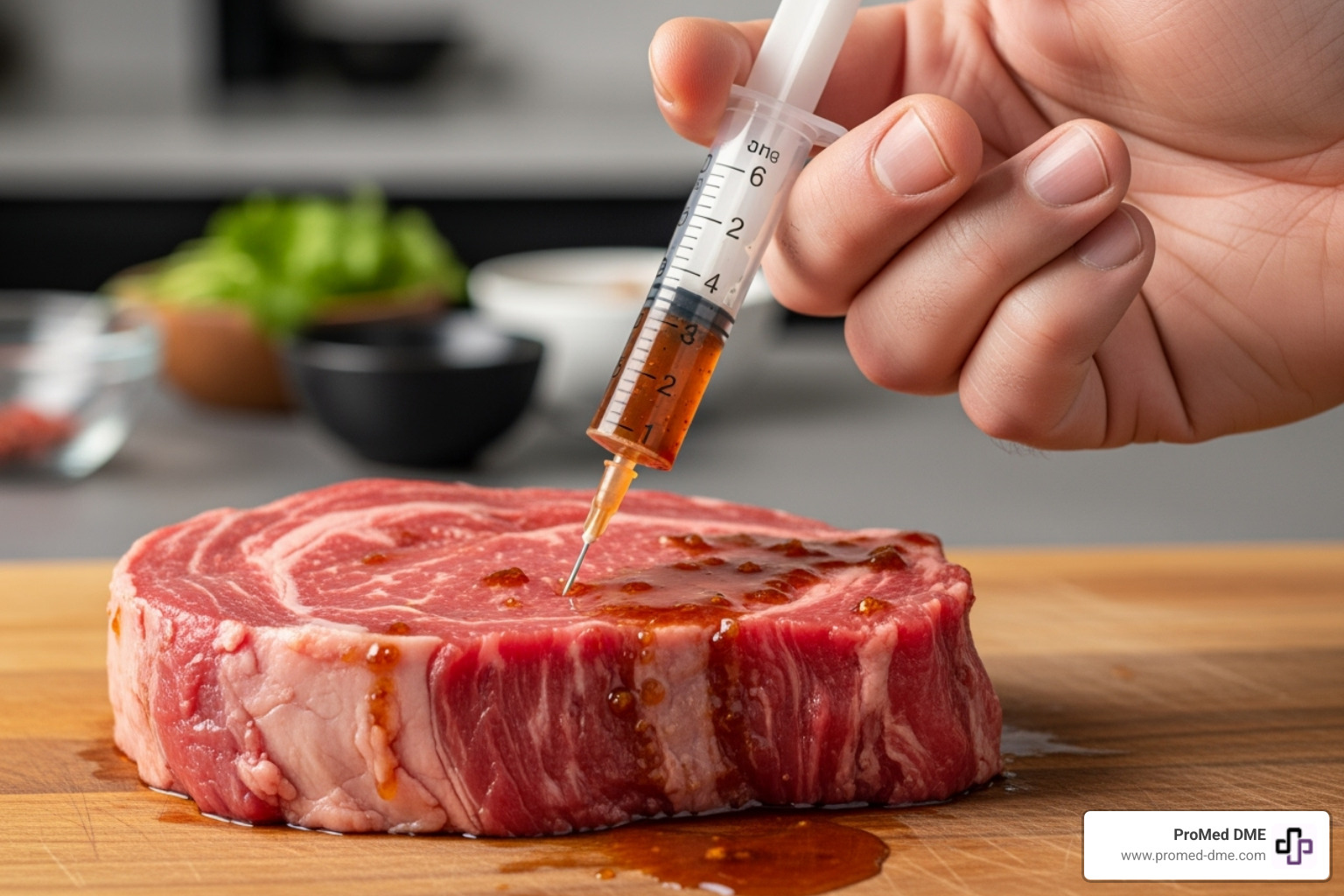
In research laboratories, syringes provide the precision scientists need for laboratory filtering and chromatography work. When researchers need to inject tiny, exact samples into analytical equipment or filter small liquid volumes, syringes offer the control and accuracy that expensive experiments demand.
The cooking world has acceptd syringes for culinary creativity. Professional chefs and home cooks use them to inject marinades deep into meats, fill delicate pastries with cream, or add precise amounts of flavoring to dishes. The controlled dispensing makes techniques possible that would be difficult with traditional kitchen tools.
Crafts enthusiasts appreciate syringes for applying glue to intricate models, refilling fountain pen cartridges, or dispensing materials into tight spaces. The precision control helps achieve professional-looking results in detailed work.
Even lubricant application in workshops and mechanical settings benefits from syringe precision. When you need to apply oil or grease to hard-to-reach mechanical parts, a syringe provides the accuracy that prevents waste and mess.
The sterility and convenience of single use syringes make them increasingly popular even in non-medical applications where cross-contamination must be avoided. Their disposable nature means you always start with a clean, precise tool - whether you're in a laboratory, kitchen, or workshop.
Safety, Regulation, and Disposal: The 'Single-Use' Mandate
The "single-use" label on medical syringes isn't just a suggestion—it's a life-saving mandate that has transformed modern healthcare. This simple rule has prevented countless infections and saved millions of lives worldwide.
Why Single-Use is the Gold Standard
The moment a syringe touches any surface or draws up medication, it becomes contaminated. Even if it looks perfectly clean to the naked eye, single use syringes harbor invisible dangers that make reuse incredibly risky.
Cross-contamination happens faster than you might think. Microorganisms from a patient's body or even from the environment can enter the syringe barrel. If that same syringe gets used again, those contaminants travel directly into another patient or medication vial. It's like playing Russian roulette with invisible bullets.
The stakes get even higher when we consider blood-borne diseases like HIV, Hepatitis B, and Hepatitis C. The World Health Organization has documented how syringe reuse has historically spread these devastating diseases. In fact, a shocking report from 2014 revealed that two million people were contaminated during a risky injection in just one year. These numbers aren't just statistics—they represent real people whose lives were forever changed by unsafe injection practices.
Sterility assurance is another critical factor. Single use syringes come from the factory in pristine, sterile packaging. Once that seal breaks and the syringe gets used, there's no reliable way to restore that hospital-grade sterility in a clinical setting. Plastic syringes simply can't be re-sterilized to the same exacting standards.
Even the needle sharpness matters more than most people realize. After just one injection, a needle tip becomes microscopically dulled. That dullness translates to more pain, increased tissue damage, and higher complication risks for patients. Nobody deserves that extra discomfort when a fresh syringe could prevent it entirely.
Safe Handling and Disposal of single use syringes
The "One and Only" rule governs everything we do with single use syringes: one syringe, one patient, one use, then straight into the trash. This isn't just hospital policy—it's a fundamental safety principle that protects everyone.

Here's what makes this rule so important: even if you're drawing medication for the same patient from the same vial, that syringe barrel becomes contaminated after its first use. Microorganisms can transfer from gloved hands to the plunger and then into the fluid pathway. What looks clean to us might be teeming with dangerous bacteria or viruses.
Immediate disposal means exactly that—no delays, no second thoughts. The moment a syringe finishes its job, it goes directly into a designated sharps container. These rigid, puncture-resistant containers (usually bright red with clear biohazard symbols) are specifically designed to keep used needles and syringes safely contained.
Needle-stick injury prevention starts with proper disposal habits. Never try to recap a used needle, bend it, or break it off. These seemingly innocent actions cause thousands of preventable injuries every year. Healthcare workers know that the safest needle is the one that goes straight into a sharps container.
For people managing conditions like diabetes at home, community disposal programs offer safe alternatives to throwing sharps in regular household trash. Many pharmacies, hospitals, and community centers provide these services. It's worth researching local options—proper disposal protects sanitation workers, family members, and neighbors from accidental injuries.
Regulations and Legal Considerations
Government agencies take syringe safety seriously, and the regulations reflect that commitment to public health.
FDA oversight ensures that every single use syringe meets strict safety and sterility standards before reaching patients. Manufacturers must prove their products work safely and effectively—there's no room for shortcuts when lives are on the line.
Prescription laws vary by location, and some areas require prescriptions for syringe purchases. These laws primarily aim to reduce illegal drug use and prevent disease transmission, though they can sometimes create challenges for people who legitimately need syringes for medical conditions. Many areas have created exemptions for medical necessity.
State-specific regulations add another layer of oversight beyond federal guidelines. Local authorities often have their own rules about purchasing, possessing, and disposing of syringes, so it's worth checking what applies in your area.
Needle exchange programs represent a practical public health approach to a complex problem. These programs provide clean single use syringes to people who inject drugs, dramatically reducing HIV and hepatitis transmission rates. It's harm reduction at its most effective—recognizing that providing clean supplies saves lives and protects entire communities.
These safety protocols and regulations exist because single use syringes have such a profound impact on public health. When everyone follows the rules, we all stay safer and healthier.
Frequently Asked Questions about Single-Use Syringes
We know that single use syringes can raise questions, especially when you're managing your own healthcare at home or trying to understand best practices. Let's tackle the most common questions we hear from our customers.
When is a single-use syringe officially considered 'used'?
This is probably the most important question you can ask! The answer might surprise you - a single use syringe becomes "used" the moment you break that sterile packaging seal, even before you draw up any medication.
Here's what happens step by step. Once you open the sterile packaging, the syringe is no longer guaranteed sterile, though it's still clean. The moment you pull back the plunger to draw up any fluid - whether it's insulin, saline, or any medication - the internal barrel becomes contaminated. Even tiny microorganisms from your gloved fingers touching the plunger can transfer into the barrel.
After you push the plunger to expel the contents, that syringe is definitively contaminated and must be discarded immediately. This applies even if you're drawing from the same vial for the same patient. There's no "but it's the same medication" exception here - contamination is contamination.
This strict rule exists for one simple reason: your safety. Following this protocol prevents infections and ensures every injection is as safe as possible.
Can I reuse an insulin syringe on myself?
We understand the temptation, especially with the cost of diabetes supplies. But even though you'd only be using it on yourself, we strongly recommend against reusing insulin syringes. Here's why your health is worth that extra cost.
Needle dullness happens after just one injection. That sharp point becomes microscopically blunted, making your next injection more painful and potentially damaging to your skin and tissue underneath. Nobody wants their daily insulin shots to hurt more than necessary!
The infection risk is real, even when it's just you. Bacteria from your skin can contaminate the insulin vial and then get injected back into your body during the next use. This can cause painful infections at injection sites or even more serious complications.
Once used, the sterility is compromised and there's simply no way to restore it safely at home. Your health deserves the protection that a fresh, sterile single use syringe provides every single time.
What's the difference between mL and CC on a syringe?
Great news - there's absolutely no difference! This confusion trips up a lot of people, but 1 mL equals exactly 1 cc. They're just different ways of saying the same thing.
Both milliliters (mL) and cubic centimeters (cc) are metric volume measurements. You might see different manufacturers use one term or the other on their syringe barrels, or your doctor might say "cc" while your pharmacist says "mL." Don't worry - they're talking about exactly the same amount.
This equivalency means a 3 mL syringe holds precisely the same amount as a 3 cc syringe. Whether your single use syringes are marked with mL or cc, you can measure your medications with complete confidence knowing you're getting the right dose every time.
Conclusion: Ensuring Safety and Precision with the Right Supplies
Understanding single use syringes is really about understanding the foundation of modern healthcare safety. These seemingly simple devices represent decades of medical innovation and learning, all focused on one crucial goal: keeping patients safe while delivering precise care.
Throughout our exploration, we've seen how single use syringes have transformed medical practice. Their carefully engineered components - from the transparent polypropylene barrels with precise volume markings to the various tip designs that ensure secure connections - all work together to prevent the devastating consequences of cross-contamination and disease transmission.
The "single-use" mandate isn't just a suggestion; it's a life-saving protocol that has dramatically reduced the spread of blood-borne diseases like HIV and hepatitis. When we follow the "One and Only" rule and properly dispose of used syringes in sharps containers, we're protecting not just individual patients but entire communities.
Whether you're managing diabetes with insulin syringes, working in a laboratory setting, or simply need irrigation syringes for wound care, choosing the right single use syringe makes all the difference. The specialized designs we've discussed - from U-100 insulin syringes with their low dead space to Luer-Lock tips for secure connections - show how thoughtful engineering serves specific medical needs.
For those managing their health at home, proper disposal is just as important as proper use. Many communities offer disposal programs for sharps containers, making it easy to handle medical waste safely and responsibly.
At ProMed DME, we understand that quality medical supplies aren't just products - they're tools that help you maintain your health and independence. Our commitment goes beyond simply providing single use syringes and other medical equipment. We're here with free shipping, a dedicated nurse on staff to answer your questions, and we work with most insurance plans to keep your costs manageable.
When it comes to your health, you deserve supplies you can trust and service that truly cares. That's what we've been delivering to customers across the United States from our base in Stuart, Florida.
Explore our comprehensive range of medical supplies and find how ProMed DME can support your healthcare journey with reliable products and the personal attention you deserve.
Recursos y artículos relacionados
Manténgase informado con las entradas de nuestro blog informativo.
Descubra las ventajas de ProMed
y pruebe nuestros productos
Ofrecemos envío gratuito y un legendario servicio de atención al cliente para garantizar que reciba los
mejores productos de DME para sus necesidades.

